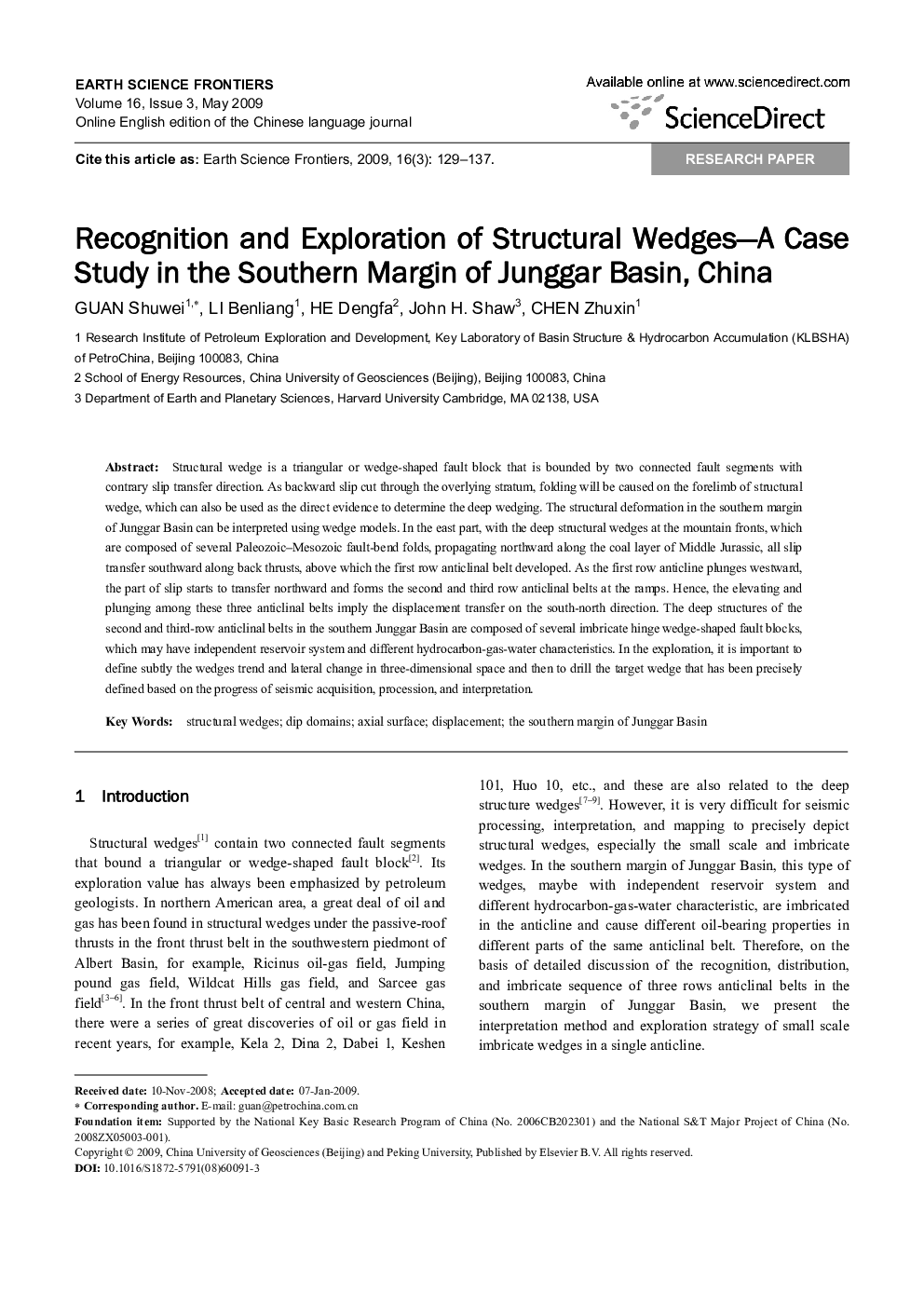| Article ID | Journal | Published Year | Pages | File Type |
|---|---|---|---|---|
| 4701515 | Earth Science Frontiers | 2009 | 9 Pages |
Structural wedge is a triangular or wedge-shaped fault block that is bounded by two connected fault segments with contrary slip transfer direction. As backward slip cut through the overlying stratum, folding will be caused on the forelimb of structural wedge, which can also be used as the direct evidence to determine the deep wedging. The structural deformation in the southern margin of Junggar Basin can be interpreted using wedge models. In the east part, with the deep structural wedges at the mountain fronts, which are composed of several Paleozoic–Mesozoic fault-bend folds, propagating northward along the coal layer of Middle Jurassic, all slip transfer southward along back thrusts, above which the first row anticlinal belt developed. As the first row anticline plunges westward, the part of slip starts to transfer northward and forms the second and third row anticlinal belts at the ramps. Hence, the elevating and plunging among these three anticlinal belts imply the displacement transfer on the south-north direction. The deep structures of the second and third-row anticlinal belts in the southern Junggar Basin are composed of several imbricate hinge wedge-shaped fault blocks, which may have independent reservoir system and different hydrocarbon-gas-water characteristics. In the exploration, it is important to define subtly the wedges trend and lateral change in three-dimensional space and then to drill the target wedge that has been precisely defined based on the progress of seismic acquisition, procession, and interpretation.
